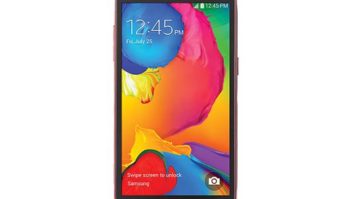Overland Park, Kan. – Sprint rolled out 4G LTE to 20 more markets and Sprint Spark enhanced-LTE service to two more cities.
With the expansions, LTE is available in 402 cities, and Sprint Spark is available in 18 cities.
The two new Sprint Spark cities are Provo, Utah, and Trenton, N.J. They join Austin, Texas; Baltimore; Chicago; Dallas; Fort Lauderdale, Fla.; Fort Worth, Texas; Houston; Jacksonville, Fla.; Kansas City, Kan./Mo.; Los Angeles; Miami; New York; Philadelphia; Salt Lake City; San Antonio; and Tampa, Fla.
The additional markets getting LTE service are Provo/Orem, Utah; Trenton/Ewing, N.J.; Bakersfield, Calif.; Lancaster, Pa.; Omaha, Neb.; Shawnee, Okla.; Bridgeport/Stamford, Norwalk, Conn.; Mason City, Iowa; Peoria, Ill.; El Centro, Calif.; Myrtle Beach, S.C.; Visalia/Porterville, Calif.; Hot Springs, Ark.; Nogales, Ariz.; Sarasota/Bradenton, Fla.; Willimantic, Conn.; Kenosha, Wisc.; Ocean City, N.J.; Scranton/Wilkes-Barre, Pa.; and Zanesville, Ohio.
Sprint expects to cover 250 million people with 4G LTE by midyear and bring Sprint Spark to the top 100 U.S. markets within three years.
Sprint Spark extends 4G LTE beyond the carrier’s 1.9GHz band to include the 800MHz and 2.5GHz bands, delivering peak wireless speeds of 60Mbps per sector today on capable devices, the carrier said.
In non-Spark LTE markets, the carrier achieves 25Mbps peak LTE speeds in its 1.9GHz band with average throughput of 6-8 Mbps. The carrier’s previous 4G technology, 2.5GHz Mobile Wi-MAX, delivered peak speeds of 10Mbps with average throughput of 3-6Mbps.
Although Spark currently delivers peak 60Mbps speeds, Spark could deliver speeds three times faster by late next year with the addition of three-channel (3x20MHz) carrier aggregation in the 2.5GHz band, a spokesperson said. “This means we could see peak speeds of 180Mbps by the end of 2015,” she said. The carrier plans 2x20MHz [two-channel carrier aggregation] in late 2014 to double current data speeds.
“Furthermore, with three-channel carrier aggregation and the addition of 8×8 MIMO, we expect we could achieve peak speeds as high as 1.3Gbps,” the spokesperson said. The company hasn’t announced a timetable for 8×8 MIMO. “And given our spectrum assets and expected technological improvements in multi-layer MIMO and multiple-channel carrier aggregation, it is technically feasible over time to deliver greater than 2Gbps speeds over the air.”
Separately, the company announced the expansion of HD Voice to Provo/Orem, Utah, with Trenton/Ewing, N.J., expected to go on-line soon. Sprint expects HD Voice to be available network-wide by mid-2014.
HD Voice almost eliminates background noise and enhances sound quality to exceed that of a landline, the company said. A typical phone without HD Voice offers four octaves of sound, but a phone with HD Voice offers seven, the company explained. Ten octaves is considered “perfect hearing,” the company said. HD Voice capability requires calls between two Sprint HD Voice-enabled devices on upgraded areas of the Sprint network.







